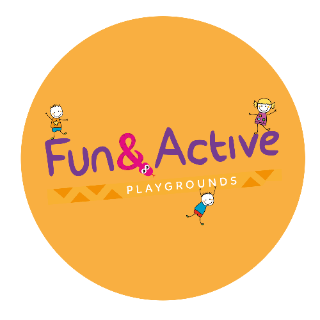Top Playground Designs To Deter Bullying During Free Play
Updated on: June 28, 2023
We build anti-bullying devices into classroom activities in many different ways. When children are in the playground it’s important any playground design incorporates lots of ideas to deter bullying too.
The unstructured nature of free play leaves some children vulnerable to bullying from peers. We know how devastating bullying is but sometimes we forget how many skills it takes to engage in free play with others.
Confidence, creative thinking, social skills, negotiation, communication, patience, resilience, these are just some of the many elements involved in successful (and friendly!) free play. The benefits of free play are many, so we want to support all children to enjoy positive experiences at playtime.
Preventing Bullying on The School Playground
All school playground designs should help to prevent bullying. When deciding how to shape a playground update or a brand new children’s play area, the design you choose should meet each of the following elements:
- be inclusive;
- support a range of different types of play;
- promote the development of social skills;
- encourage children to play with a variety of different pupils;
- be stimulating and engaging for all;
- be easy for any child to use;
- foster collaborative play;
- makes supervision by support staff easy.
Left unchecked, bullying has wide-ranging effects which ripple out into all areas of a child’s life. From fraught relationships with peers and family to low self esteem, poor attainment and anxiety, the results of unhappy playtimes can leave a lasting impact on children so it’s crucial we get playground planning right.
Let’s take a closer look at how we ensure our school playground designs help to prevent bullying at playtime.
Top Playground Designs To Deter Bullying During Free Play
1. 4-Way Target Solid Playground Marking
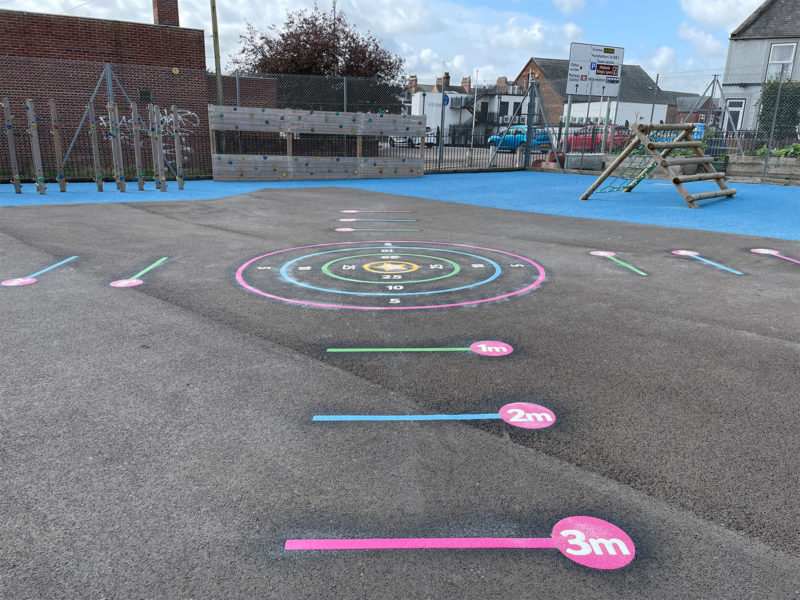
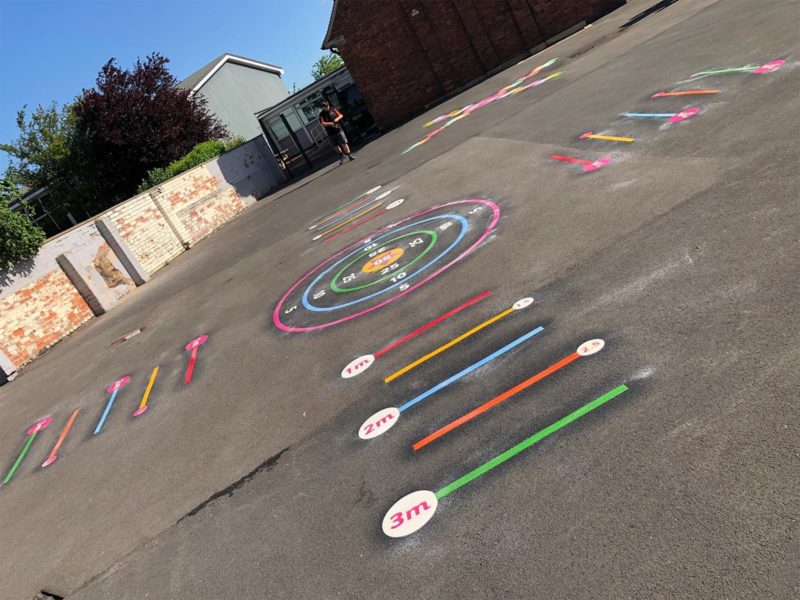
One of the biggest things you want to prevent is isolation. The 4-Way Target Playground Marking is a great example of an inclusive and stimulating activity that has appeal for all.
For so many children, large ball games like football can feel beyond their skill level or interest. Being left out of popular games is miserable for any child so ideas that can be enjoyed by a wide range of children are essential.
The 4-Way Target Playground Marking is one of many target playground games in our collection. The game can be enjoyed by children of any skill level and age. Children don’t have to throw a ball, they can use a beanbag or mini hoop so there’s no pressure to have great ball skills.
The variety of marked distances add challenge and increasing motivation for all whilst the colourful targets will keep children engaged. The pursuit of the elusive 100 in the middle will build children’s concentration. As they play, pupils will develop greater perseverance, resilience, problem-solving skills, co-ordination, fine motor skills and more.
See more target playground markings
2. Friendship Stop Playground Markings
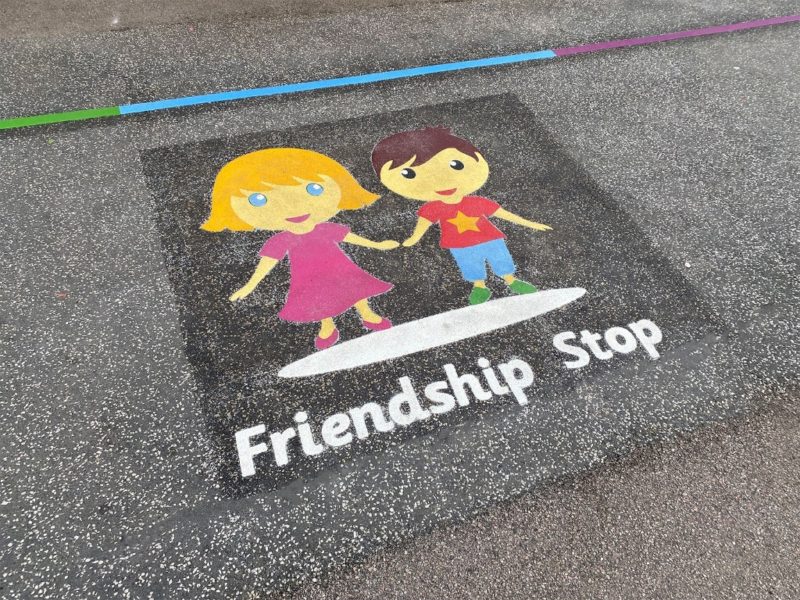
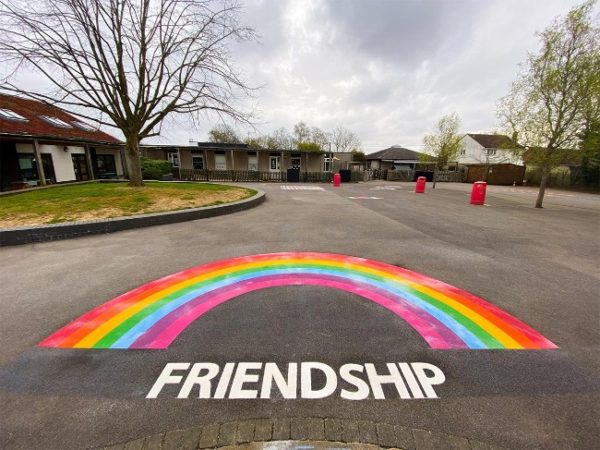
Visual reminders are powerful because they transport us back to related memories. We have a range of friendship stop playground markings that provide a discreet yet impactful reminder that all pupils have a responsibility to be kind and considerate to other children.
A well-positioned friendship marking can be a timely reminder that the playground is still a place where school rules apply.
Friendship Stops and Benches
For some schools, these markings or other designs double as a friendship stop where any child can find a friendly face to help if they don’t feel happy at playtime. You might choose to use our friendship bench, or a friendship stop sign instead.
School Values
School value markings can work in a similar way. How long did you take to devise your school ethos only to leave those important values tucked away in the pages of school policies and staff handbooks?
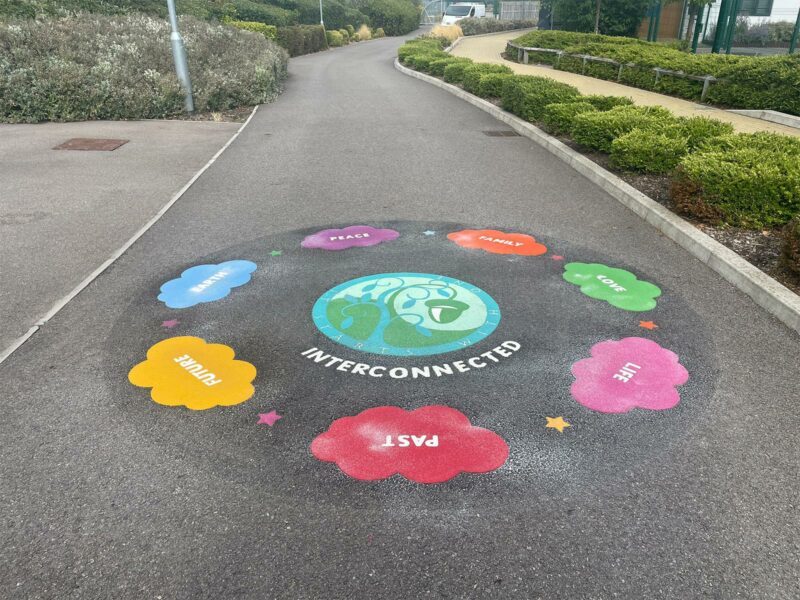
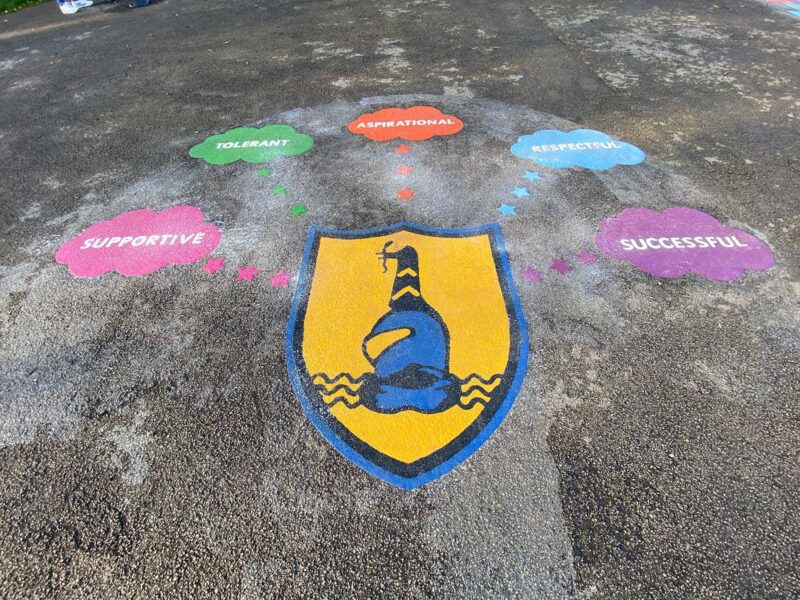
Having a vibrant visual reminder of the values which guide your entire school community is a brilliant way to remind children of the way you expect all members of the school to behave. Seeing the visual prompt for behaviour every time they enter the playground can serve as a wonderful deterrent for children who may otherwise have let their behaviour slip.
Custom Designs
At Fun & Active Playgrounds we believe you know your school community best. We want you to have play equipment that’s the best fit for your community so any of our playground design ideas can be customised to suit your needs.
Whether you want to adapt the friendship playground marking, commission a friendship stop sign or have a unique idea for your own design, our talented team would be delighted to create your custom design.
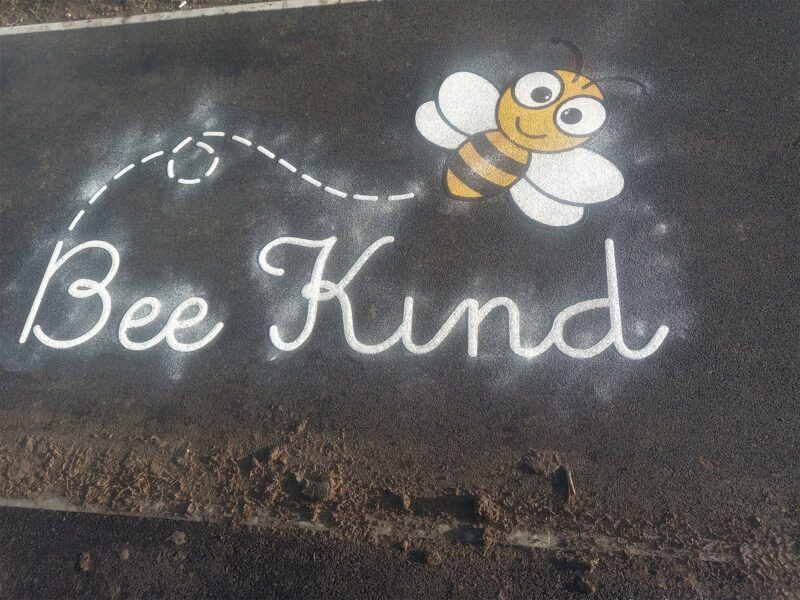
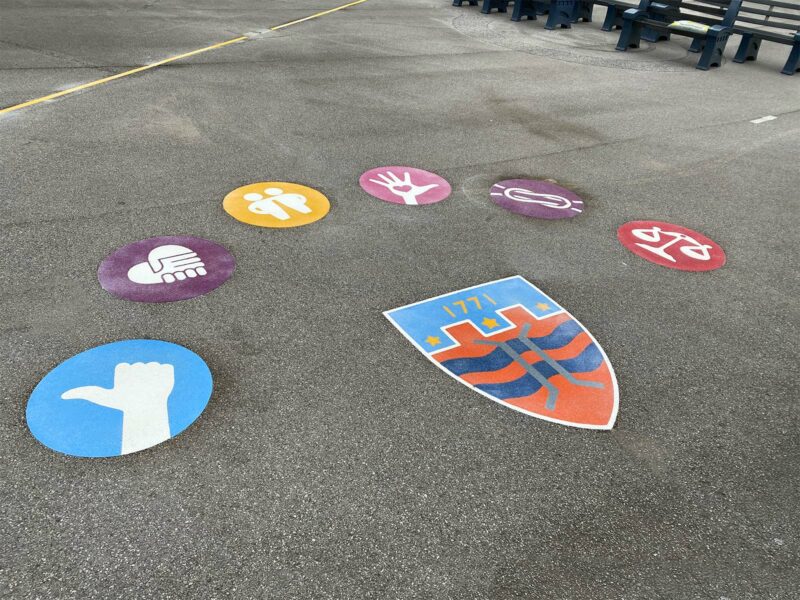
3. Tabletop Games
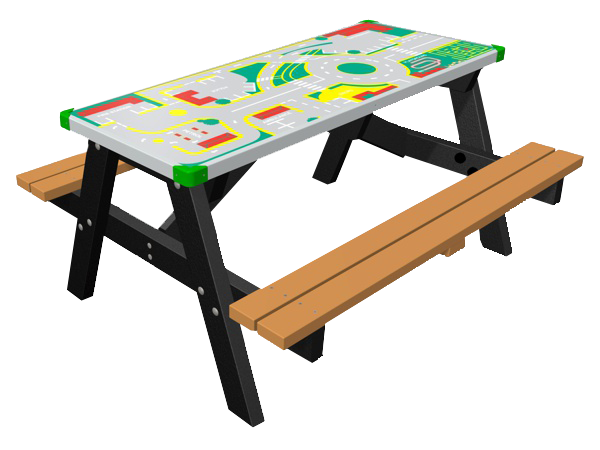
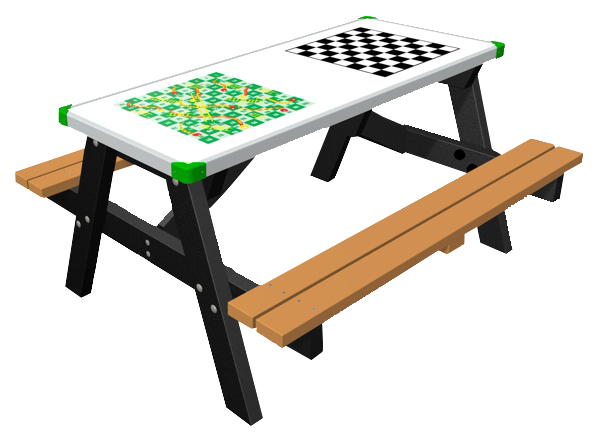
When planning a school playground, reflective play is a type of play that’s easy to miss. Yet it’s so important that playground design supports quiet play. Calm, quiet play has benefits for all children, for some it’s their preferred way to play.
Encourage new friendships and support a range of play preferences with our tabletop games. Fitting easily over most picnic table tops measuring 1500mm x 600mm, children can simply sit at one of these tables and quickly find themselves joined by other children eager to have a go at the intriguing activity.
Inclusive and Collaborative Play
From car racing to the solar system, chess and a map of the world, each tabletop activity provides multiple options for inclusive games which draw on popular children’s interests.
By sitting in close proximity to each other whilst participating in a shared game, children will naturally begin to converse and interact as they play together. This type of collaborative play is fantastic for shy children because they are completely free from the pressure to join a group and spark conversation.
4. Skeleton Playground Marking and Other Educational Markings
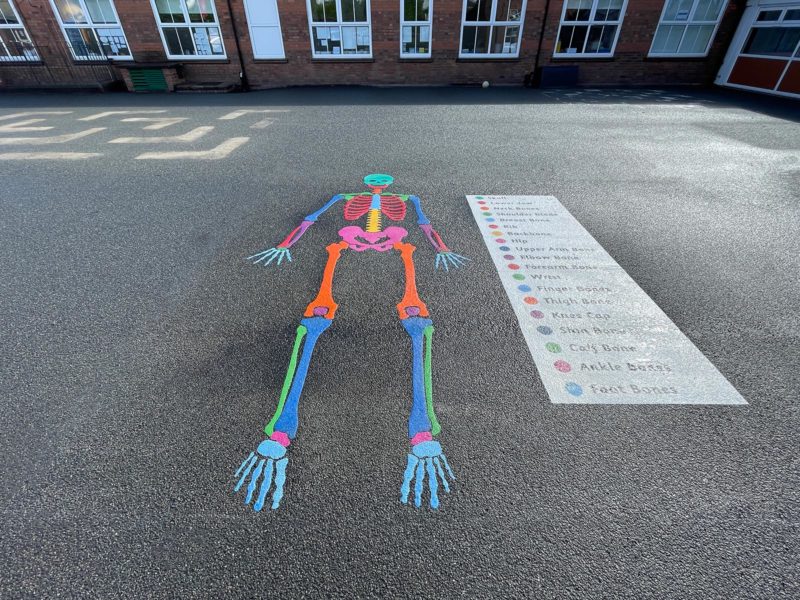
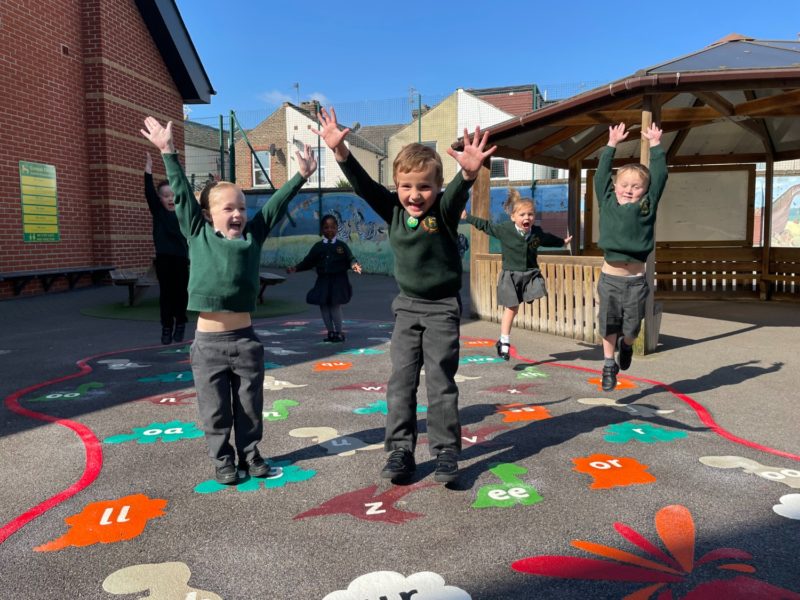
Every child, every school community, is completely different so it’s really important to spend some time considering the interests of your pupils.
Fun and Stimulating Activities
At Fun & Active Playgrounds, we believe play should be both fun and educational. However, fun means something different to each of us. That’s one of the reasons why it can be very useful to involve a group of children in the design process.
For our design team, national curriculum subjects are a great way to ensure the contexts we use are inclusive. Used alongside more general children’s interests, national curriculum topics provide universal contexts we can be sure all pupils will know.
Access For All
With our designs easily accessed by any children, we can be sure all children can freely engage in open-ended play and interact with our designs in any way they choose.
Easy to Understand
Beyond familiar contexts, we ensure our vibrant playground surfaces include plenty of visual cues so children know what to do and can join in games with ease. These visual prompts help to keep play structured and orderly, preventing unwanted arguments and fights.
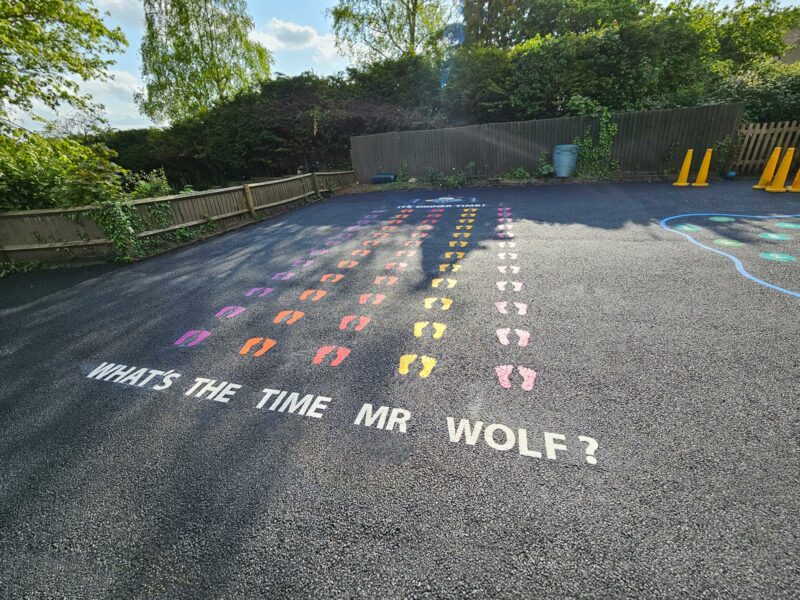
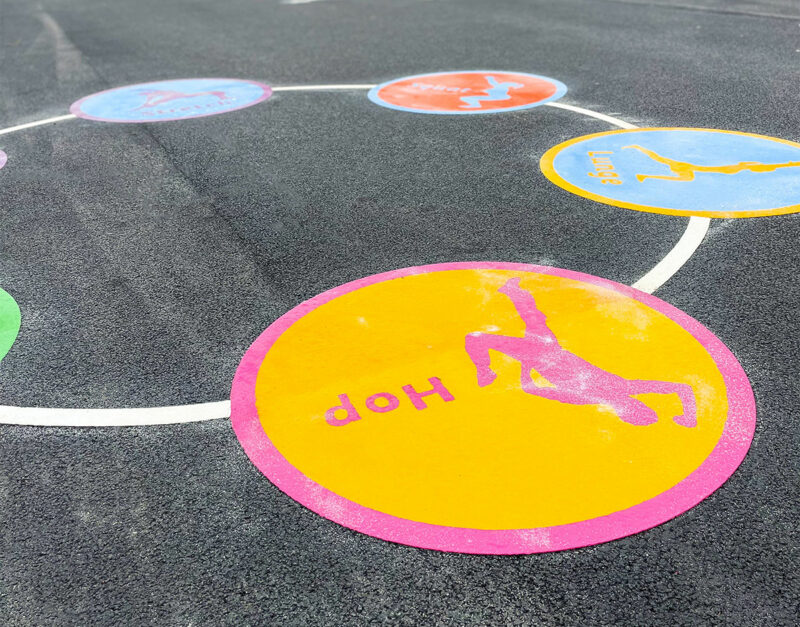
For some children curriculum-based playground markings are a welcome relief from the pressure they may feel to engage in energetic or imaginative play. For those children, more logical, fact-based play is their preferred way to unwind.
From science to maths, phonics and geography, our innovative children’s playground ideas make it possible for children to enjoy reflective play which draws on their natural interests in these subjects.
Builds Self-Esteem and Social Skills
Best of all, these activities give children an opportunity to share their knowledge with peers who are also attracted to the innovative designs. In this way, pupils will build their self-esteem and form new friendships with children they wouldn’t otherwise have interacted with, as well as others who share their interest in a particular topic.
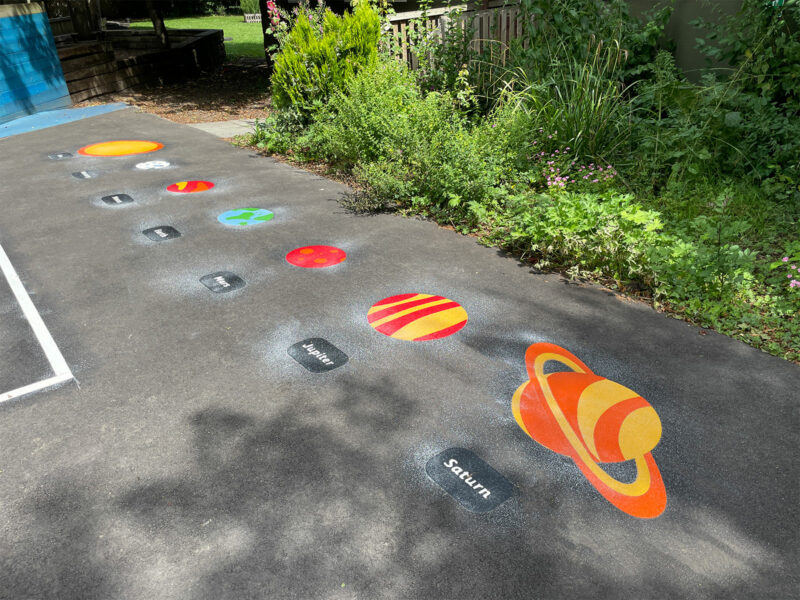
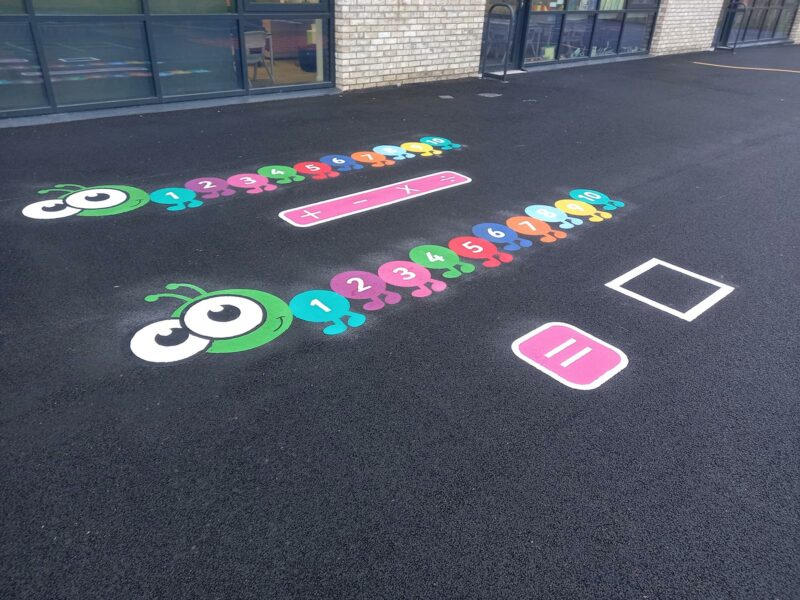
For added stimulation, our freestanding play panels add an exciting multi-sensory element to play making it even more engaging and fun for all.
For superb options to help you create the perfect bullying-deterring, inclusive playground, browse our collection now.

Jess Sparks
Jess is deeply committed to supporting our mission of positively impacting UK outdoor play environments to promote healthy lifestyles in children.
With a CIM Level 6 Diploma in Sustainable Marketing, Jess channels her passion for sustainability into her marketing role, using her skills to promote eco-conscious practices and raise awareness for our initiatives.
Jess’ experience within the industry is instrumental in driving engagement and supporting connections with those who require ultra-durable, high-grade playground markings both locally and internationally.
